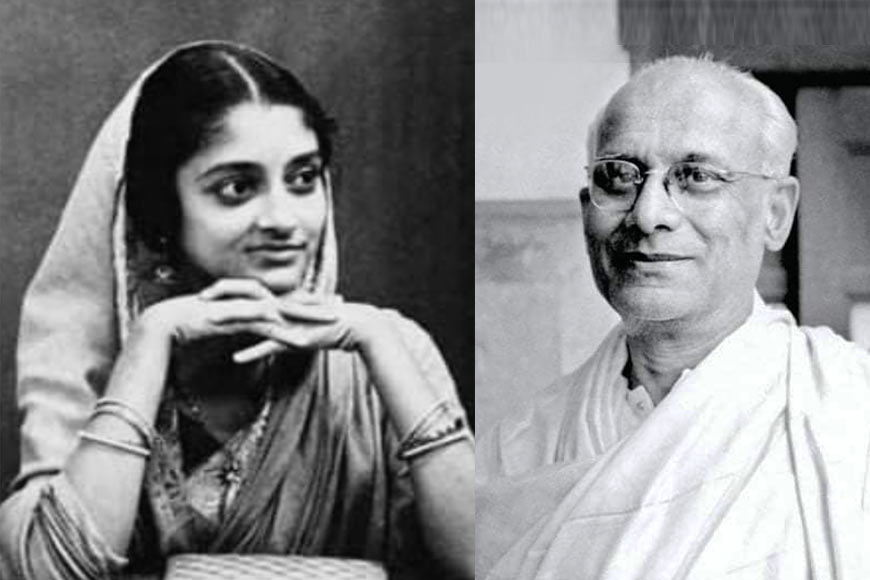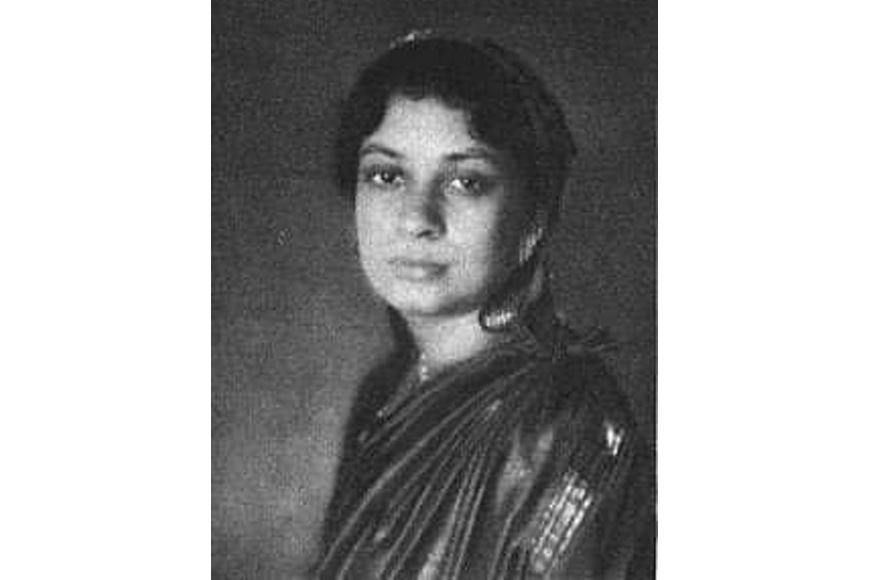Love story that took Santiniketan by surprise

Meera Devi and Rathindranath Tagore
“I am not an escapist. I am going into seclusion because I want to discover myself and give opportunity to any latent impulse that might be waiting development”….
A letter that indeed reflects the subtle pain and frustration of a man who became the target of moral policing in the abode of peace --- Santiniketan. And the man who wrote this letter to his long-time friend and one-time colleague Leonard Elmhirst was none other than Rabindranath Tagore’s son Rathindranath. The episode referred to in the letter was one of the most blossoming love stories that sent ripples among the Ashramites and forced the son of the very man who set up Visva Bharati to leave his very home.
Rathindranath Tagore wished to break free of all the lies and tangle of ties that ensnared him. Thus, he wished to ‘disappear’ and be ‘forgotten.’ A couple of years ago, with some rare and unpublished letters and photographs, a new book written by Tagore scholar Nilanjan Bandy-opadhyay was launched that revealed the untold story of Rabindranath Tagore’s eldest son Rathindranath Tagore during his last days when he was hit with a volley of controversies sur-rounding this rare love story and had to leave Santiniketan.
 Pratima Devi
Pratima Devi
Rathindranath Tagore wished to break free of all the lies and tangle of ties that ensnared him. Thus, he wished to ‘disappear’ and be ‘forgotten.’
‘Apni Tumi Roile Dure: Shongo Nishongota O Rathindranath’ throws light on the last nine years of Rathindranath Tagore and his controversial relationship with Meera Devi, who he fondly called Meeru. Meera Devi was the wife of a Professor of Visva Bharati, Nirmal Chandra Chatto-padhyay. In one of his letters Rathindranath writes: “All I want is to spend my remaining days in peace and Meeru is all that matters.” Besides being a brilliant agricultural scientist from Illinois State University, Rathindranath was the only surviving child of Rabindranath Tagore and did lots for Visva Bharati and Santiniketan taking Tagore’s vision forward. He was also the first Upacharya of Visva Bharati.
Yet this love affair tore apart the silence and peace of a closed knit community of Santiniketan. Rathindranath left for Dehradun as rumours of an affair between him and Meera almost led to a fiery scandal and the ‘moral police’ among the Ashramites literally frowned at natural emotions that could truly be expressed between two adult people.
At 65, Rathindranath Tagore resigned from his post as vice-chancellor and left his wife Pratima Devi and his home in Santiniketan to live with Meera (then in her 30s) and her two-and-a-half year-old son Jayabrato in Dehradun. It was here that Rathindranath built Mitali, a house that replicated his home in Santiniketan. They lived together for nine years till his death, with Nirmal Chandra often visiting them with Rathindranath’s adopted daughter.
At 65, Rathindranath Tagore resigned from his post as vice-chancellor and left his wife Pratima Devi and his home in Santiniketan to live with Meera (then in her 30s) and her two-and-a-half year-old son Jayabrato in Dehradun.
How Nirmal took this arrangement, what were Mira’s feelings for Rathi-da and her husband is still not clear. Visva-Bharati quickly forgot Rathindranath. Rathindranath was also a talented art-ist and would often paint Meera. His wife Protima was a widow of 16, when Tagore had ‘ar-ranged’ her marriage with his son. It was a happy marriage by all accounts, though the demands of the new university kept him away from his house in Jorasanko for long periods of time. While, Meera was thirty-one years younger than Rathindranath and a beautiful friendship developed between the two. Though the Santiniketan community was very upset and protested, neither Meera’s husband nor Pratima Devi put up much objection.
Surprisingly, the then Prime Minister of India, Jawaharlal Nehru also did not like this and asked Rathindranath to throw Meera and her husband out of Visva Bharati. He however refused, re-signed, and he and Meera tossed it all up in the air and left for Dehradun. Both families were on cordial terms, met and corresponded regularly. Rathindranath Tagore died in 1961, and Meera followed him a few years later. That’s where the love story ends, or may be doesn’t, for in this transient world, love is always intransient. May be, even Rabindranath Tagore would have ap-proved of this beautiful relationship.










